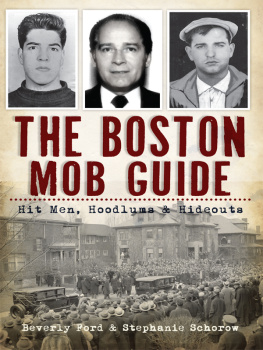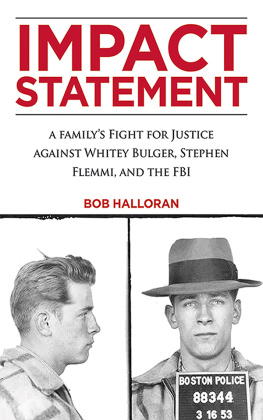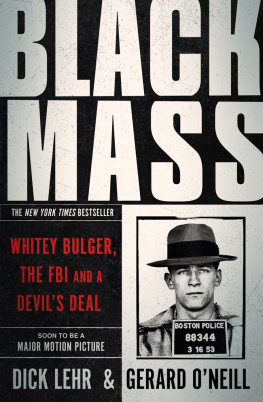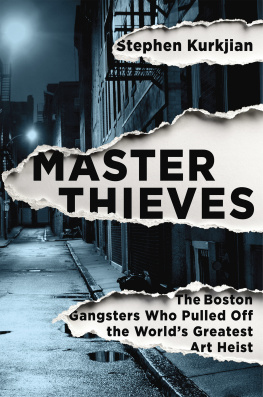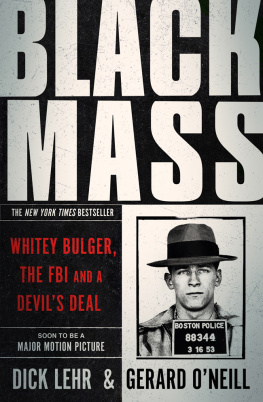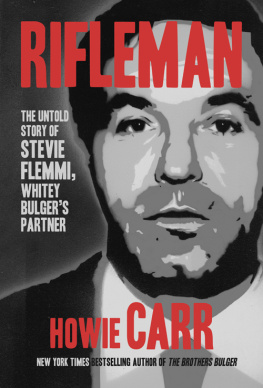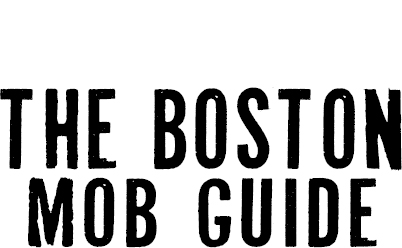

Published by The History Press
Charleston, SC 29403
www.historypress.net
Copyright 2011 by Beverly Ford and Stephanie Schorow
All rights reserved
Cover photos courtesy of the Boston Public Library, Print Department and the Leslie Jones Collection.
First published 2011
Second printing 2012
e-book edition 2012
ISBN 978.1.61423.304.6
Library of Congress Cataloging-in-Publication Data
Ford, Beverly.
The Boston mob guide : hit men, hoodlums and hideouts / Beverly Ford and Stephanie Schorow.
p. cm.
print edition ISBN 978-1-60949-420-9
1. Organized crime--Massachusetts--Boston. 2. Gangsters--Massachusetts--Boston. 3. Criminals--Massachusetts--Boston. I. Schorow, Stephanie. II. Title.
HV6452.M4F67 2011
364.1060974461--dc23
2011037866
Notice: The information in this book is true and complete to the best of our knowledge. It is offered without guarantee on the part of the authors or The History Press. The authors and The History Press disclaim all liability in connection with the use of this book.
All rights reserved. No part of this book may be reproduced or transmitted in any form whatsoever without prior written permission from the publisher except in the case of brief quotations embodied in critical articles and reviews.
CONTENTS
ACKNOWLEDGEMENTS
The authors would like to thank the extraordinary staff of the Boston Public Library for their generous help in locating photos and other materials for this project, as well as former Boston Herald photographer and investigator John Landers. The authors would also like to thank Jeff Saraceno at The History Press for making us an offer we couldnt refuse and his patience during the process of putting this book together.
INTRODUCTION
On June 22, 2011, the game of Wheres Whitey? ended forever. After sixteen years on the lam, Bostons most notorious gangster, James J. Whitey Bulger, was captured without incident in Santa Monica, California. The day that many Bostonians thought would never come had arrived, closing an infamous chapter in the citys history.
The twists and turns of Whiteys long criminal recorda tale so filled with double-crosses, ironic shifts and colorful characters that it reads like fictionwas a fitting climax to Bostons long relationship with the dark side. Along with revolutionaries, statesmen, philosophers and authors, Boston has seen a colorful cadre of wise guys, bad boys, criminal masterminds and low-life hoods who have left their mark on the City on the Hill. The book that you now hold in your hand is a guide to these characters and the places they once walked and ruled with intimidation, fear and violence.
And what a crew they are! Anyone not living under a rock in the past year knows that Whitey Bulger was captured, but not everyone knows the full extent of his sordid yet mesmerizing saga, not even longtime Bostonians. Many have heard of Stephen the Rifleman Flemmi, Francis Cadillac Frank Salemme or Joe the Animal Barboza; many dont know how they got their nicknames or how they are interconnected. And then there are hoodlums whose names are only dimly rememberedmen like Steve Wallace and Dodo Walsh of the Gustin gang in South Boston, Joseph Lombardo of the North End or Charles King Solomon, who once presided over the Cocoanut Grove nightclub. There are the Italians: Gennaro Angiulo and his brothers and the Rhode Islandbased Patriarca family; the Irish: Buddy McLean and Howie Winter of Somerville; as well as representatives of other immigrant groups and ethnicities. Often, there has been a thin line between legal and illegal businesses. It was not unusual to find Boston families in which one son was a cop and another was a bootlegger, one was a lawyer and the other a thug. Whitey Bulger and his brother, the former Massachusetts senate president William Billy Bulger, are prime examples.
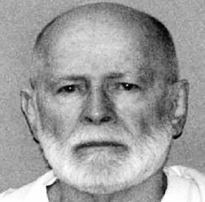
This was the photo flashed around the world in June 2011 when fugitive James Whitey Bulger was arrested at an apartment in Santa Monica, California, where he had been living under the name of Charles Gasko. FBI file photo.
In doing their research, both authors were repeatedly struck by the complicated but strong connections among the various mobsters. Bev, an investigative reporter, had to untangle numerous threads in Whiteys world, a tough challenge even though she had covered the gangster for years as a cop beat reporter for the Boston Herald. Stephanie found that the names she had encountered while researching the 1942 Cocoanut Grove nightclub and the 1950 Brinks robbery for her previous books popped up again in the 1950s, 1960s and 1970s. Boston, at its core, is a small town, and the strong connections that once linked Brahmin bluebloods and the literary elite are eerily mirrored by the ties among the hit men, loansharks, guns-for-hire and dope dealers who also walked Bostons streets.
Its hard to keep track of them all. There are many good books out there on Bostons mob landscape; we knowweve read a lot of them (see the bibliography), and we relied on the work done over the past fifty years by the ink-stained scribes of the Boston Globe and the Boston Herald, as well as newspapers long gone, such as the Record American. Moreover, not a few of the mobsters mentioned here have published their own memoirs, adding their own perspectives on events. You can read this book on its own or you can refer to it when you read the others; we intend it to be the scorecard to use while getting to know the players.
Because it gets complicated very quickly. Theres the Prohibition period, with bootlegging by Russian Jewish mobster Charles King Solomon and perhapsas it has been allegedby the patriarch of the Kennedy clan, Joseph Kennedy. Early Irish gangsters are represented by the South Bostonbased Gustin Gang, which ran afoul of the North End Italian mobsters headed by Joseph Lombardo. In the 1950s, the Winter Hill Gang, based in Somerville, emerged, led by, in succession, Buddy McLean, Howie Winter and Bulger. Then there are the battles between the Mullen Gang and the Killeens of South Boston and, in the 1960s, a full-scale mob war among factions from Charlestown, South Boston and Somerville. Its a dizzying series of hits, revenge slayings and tenuous alliances that are both fascinating and horrifying. Add in the operations of the New England Mafiathe Angiulos of the North End and the Patriarcas of Rhode Islandand you have a thick, uneasy stew of connections, partnerships and animosities. Finally, theres Whitey, who has connections to nearly all the players here, either as a sometimes partner or deadly rival. Whether youre new to Boston or have grown up here, Boston Mob Guide: Hit Men, Hoodlums and Hideouts will fill you in on the essentials: what you know, what you dont know and what you think you know. No one volume could possibly cover every figuremuch less every hitin Bostons organized crime, but we believe this book is a fair sampling of mob history.
This book was written after we received an offer we couldnt refuse: The History Press asked us to write a guide to Bostons gangsters and their hangouts and hits. (At first, the editors wanted a guide to Bostons mafia, and we had to explain that crime was an equal opportunity employer here for the Irish, Italian, Jews and Chinese.) Because Boston is such a compact city, mobster haunts and hideouts are cheek-by-jowl with other hallmarks of history. Just a stones throw from the Old North Church, famed for its one-if-by-land, two-if-by-sea message to Paul Revere, was the Prince Street headquarters of the Angiulo gang. Right on the vaunted Freedom Trail is the North Terminal Garage, the site of the infamous Brinks heist in 1950. The spectacular ocean views afforded on a walk around Castle Island in South Boston are enjoyed by hundreds of people daily and were once the backdrop for conversations by a strolling Whitey Bulger and his lieutenants, Kevin Weeks and Steve The Rifleman Flemmi. A couple blocks from the hustle of Downtown Crossing is the site of the Blackfriars club, in which five people, including a prominent TV reporter, died in a hail of bullets in 1978 in a case that remains unsolved. Many of the movies about Bostons bad guys were filmed on location, and in the last chapter, we find the spots where Tinsel Town met The Town.
Next page
